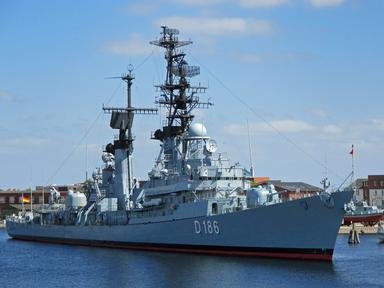Quiz Answer Key and Fun Facts
1. What was the name of the Royal Navy's last battleship?
2. In terms of bore diameter, the largest gun on current United States Naval vessels is a_____ naval rifle.
3. While submerged, modern U.S. Navy submarines detect and track surface and subsurface contacts by;
4. What country's navy was the first to permit women to serve in submarines?
5. What navy developed the concept of the "angled deck" aircraft carrier?
6. A pilot of an F18 is making a landing approach to the flight deck of an aircraft carrier. The instant his wheels touch the deck he should;
7. In most modern navies, a surface ASW (Anti-Submarine Warfare) vessels' primary anti-submarine weapons for use against a hostile submarine are;
8. Every ocean going merchantman carries a Plimsoll Mark on each side of the ship. What is the purpose of a Plimsoll Mark?
9. What was distinctive about the 18 "K" Class submarines in service, in The Royal Navy, from 1916 to 1931?
10. What was distinctive about the 3 "M" Class submarines in service, in The Royal Navy, from 1920 to 1932?
Source: Author
clemmydog
This quiz was reviewed by FunTrivia editor
Bruyere before going online.
Any errors found in FunTrivia content are routinely corrected through our feedback system.

